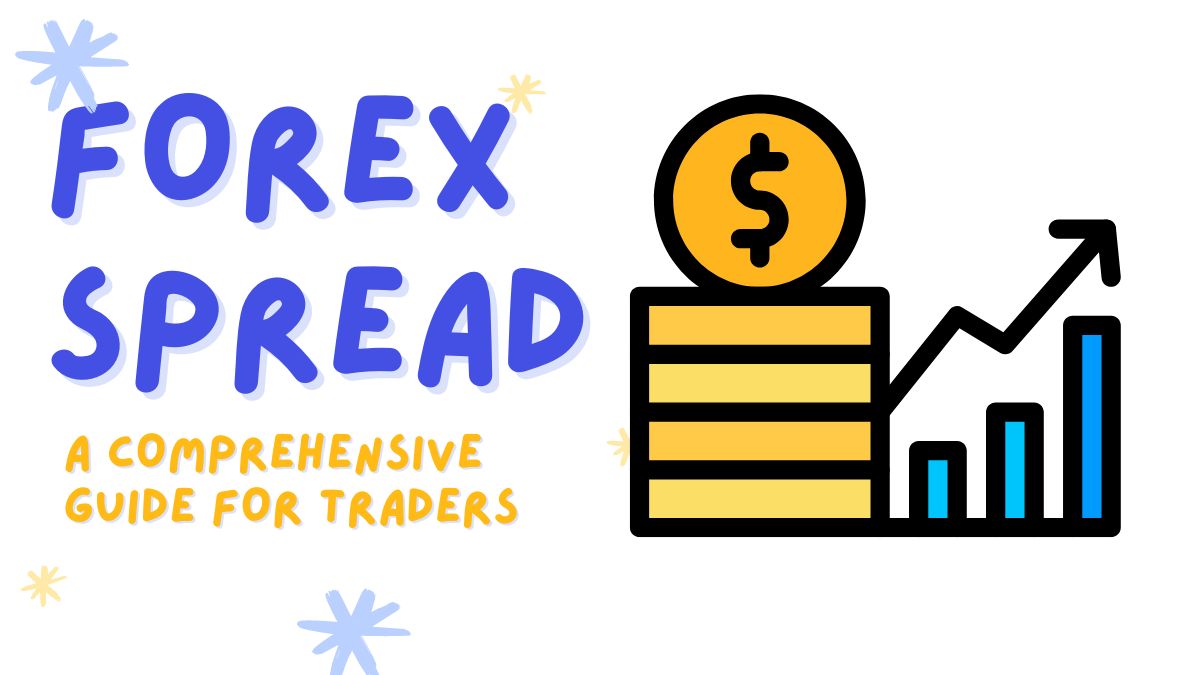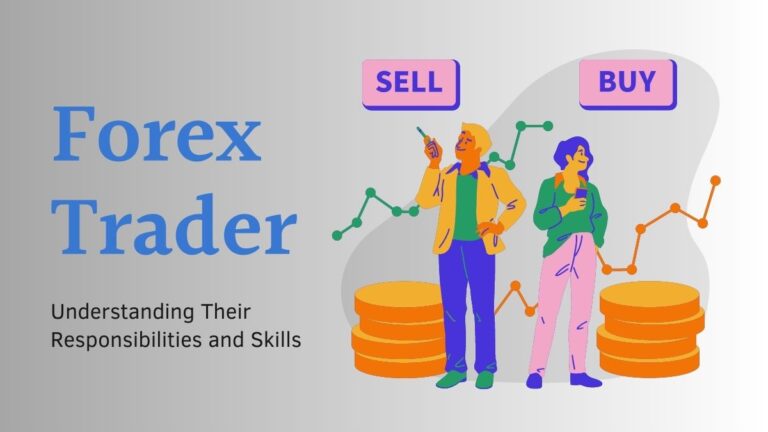Demystifying Forex Spreads: A Comprehensive Guide for Traders
Are you tired of feeling overwhelmed and confused by the complexities of forex spreads? Look no further! In this comprehensive guide, we aim to demystify the world of forex spreads and provide traders with a solid understanding of how they work.
Whether you’re a seasoned trader or just starting, get ready to dive into the fascinating world of spreads as we unravel their secrets, shed light on common misconceptions, and equip you with valuable knowledge to navigate the Forex market like a pro. Get ready for an eye-opening journey that will revolutionize your trading game!
Table of Contents
What is a Forex Spread?

A forex spread is simply the difference in the bid and ask price of a currency pair. The bid price is the price at which you can sell the base currency, while the asking price is the price at which you can buy the base currency. The spread is usually measured in pip, which is the smallest unit of change in a currency pair. For most currency pairs, one pip is equal to 0.0001, but this may vary depending on the pair.
The forex spread is important because it represents the cost of trading a currency pair. When you trade with a broker, they will quote you a spread for each currency pair. This spread is how they make their money, and it should be factored into your trading decisions.
Generally speaking, spreads widen when there is more volatility in the market and narrow when there is less volatility. This means that spreads can fluctuate throughout the day as market conditions change. You should always check your broker’s spreads before you trade to make sure you are getting a good deal.
Types of Forex Spreads
When trading the foreign exchange market, you will notice that there are two prices for each currency pair. There is the bid price, which is the price you can sell the currency at, and the asking price, which is the price you can buy the currency at. The difference between these two prices is known as the spread.
The size of the spread can vary significantly from one currency pair to another. For example, major currency pairs like EUR/USD and GBP/USD typically have very tight spreads, while more exotic currency pairs like USD/TRY or EUR/TRY can have much wider spreads.
The type of spread you will encounter when trading forex will depend on your broker and the specific currency pair you are trading. The three most common types of spreads are fixed spreads, variable spreads, and zero-spread accounts.
Fixed Spreads: A fixed spread means that the spread will always be a certain number of pips wide, no matter what the market conditions are. For example, if your broker offers a fixed spread of 3 pips on EUR/USD, then the bid price will always be 3 pips below the current market price and the ask price will always be 3 pips above the current market price.
Variable Spreads: A variable spread means that the spread will fluctuate based on market conditions. For example, if your broker offers a variable spread on EUR/USD that ranges from 2 to 4 pips, then during times of high volatility the spread could widen to 4 pips, while during times of very low volatility, it could be as tight as 2 pips.
Zero-Spread Accounts: Zero-spread accounts are a type of account offered by some brokers that allow the trader to trade without any spread at all. This type of account can be especially useful for scalpers or traders who make frequent trades and want to minimize their trading costs.
Things to Consider When Trading with Forex Spreads
When trading with forex spreads, there are a few things that you will need to consider to make sure that you are getting the best possible deal. The first thing that you need to consider is the type of spread that you are comfortable with.
There are two main types of spreads- fixed and variable. Fixed spreads are typically offered by larger brokers and they allow you to know exactly what your costs will be for each trade. Variable spreads, on the other hand, can change based on market conditions and can often be lower than fixed spreads.
The second thing that you need to consider is the size of the spread. The smaller the spread, the less you will have to pay in commissions and fees. You need to consider the currency pairs that you are interested in trading. Some currency pairs have larger spreads than others, so it is important to find a pair that suits your needs.
Strategies for Trading with Forex Spreads
When trading in the forex market, it is important to be aware of the concept of spreads. A spread is the difference between the bid and ask price of a currency pair. The bid price is the price at which a trader can sell a currency, while the asking price is the price at which a trader can buy a currency. Spreads are typically small, but they can have a large impact on profitability.
There are a few different strategies that traders can use to trade with forex spreads. One common strategy is to simply accept the spread and factor it into profit/loss calculations. This approach assumes that the spread will remain relatively stable over time and that any changes will cancel each other out.
Another common strategy is to trade with tight spreads. This approach uses limit orders to try and take advantage of small changes in exchange rates. For example, if the bid-ask spread for EUR/USD is 0.01, a trader might place a limit order to buy EUR/USD at 0.0125 (2.5 pips above the current ask price). If the price moves up just 0.001 (1 pip), then the order will be executed and the trader will make a profit of 0.25 pips (0.0001 x 100,000). This profit may seem small, but it can quickly add up if done on multiple currency pairs and over multiple trades.
Another strategy for trading with forex spreads is to take advantage of larger moves in exchange rates. This approach requires more capital and a greater appetite for risk, but it can yield larger profits than trading with tight spreads.
If the spread is wide, then a trader could place limited orders on both sides of the market to take advantage of the difference between the bid and ask prices. If the currency pair moves in one direction (either up or down), then the trader will make a profit from one of their trades while losing on the other trade.
Finally, traders can also use options strategies to trade with spreads. Options are derivatives that give traders the right to buy (or sell) an underlying asset at a predetermined price in the future. By combining options with spot forex trading, traders can effectively limit themselves to very tight spreads while still having the ability to make large profits on bigger moves in exchange rates.
No matter which strategy you choose, it’s important to be aware of forex spreads and how they can affect your profitability when trading in the foreign exchange market.
Calculating Costs with Forex Spreads
When it comes to trading forex, there are two prices for each currency pair that you trade: the bid price and the asking price. The difference between these two prices is known as the spread. Spreads are measured in pips, which is the fourth decimal place in most currency pairs. For example, if the EUR/USD bid price is 1.1605 and the asking price is 1.1608, the spread would be 3 pips.
Most brokers make money by charging a commission on each trade that you make, or by marking up the spread. For example, if you were to buy 1 lot of EUR/USD at 1.1608 and then sell it at 1.1611, your broker would charge you a commission of $8 per lot ($4 per side), or they would mark up the spread to 4 pips (1.1612 – 1.1608).
While some brokers offer fixed spreads that don’t change no matter what the market conditions are like, most brokers offer variable spreads that will widen when liquidity is low and tighten when liquidity is high. When calculating your costs, you need to take into account both the commission (if any) and the spread.
Here’s an example of how to calculate your costs when buying EUR/USD:
Buy Price = Bid Price + Spread
1 Lot = 100,000 EUR
Commission = $8 per lot ($4 per side)
Cost = (100,000 x 1.1608) + (100,000 x 3 pips) + $8.00
In this case, the cost of buying 1 lot of EUR/USD would be $11,708.00 (100,000 x 1.1608) + (100,000 x 0.0003) + $8 = $11,708.00 ).
The same formula can be used to calculate the costs of selling EUR/USD:
Sell Price = Ask Price – Spread
1 Lot = 100,000 EUR
Commission = $8 per lot ($4 per side)
Cost = (100,000 x 1.1611) – (100,000 x 3 pips) – $8.00
In this case, the cost of selling 1 lot of EUR/USD would be $11,705.00 (100,000 x 1.1611) – (100,000 x 0.0003) – $8 = $11,705.00).
When calculating your costs when trading forex, you need to take into account both the commission and the spread. You should also factor in any other hidden fees that may be charged by your broker or trading platform.
Advantages and Disadvantages of Forex Spreads
When trading in the forex market, it’s important to understand what is meant by the term “forex spread.” Simply put, a forex spread is the difference in pips between the bid price and the ask price of a currency pair. The bid price is the price at which a trader can sell a currency, while the asking price is the price at which a trader can buy a currency.
Forex spreads are variable and can change at any time during market hours. The amount of the forex spread will also vary depending on the currency pair being traded. For example, spreads on major currency pairs like EUR/USD tend to be much smaller than those on more exotic pairs like GBP/JPY.
One advantage of forex spreads is that they can help to protect traders from slippage. Slippage occurs when an order is filled at a different price than what was originally quoted. This can happen in fast-moving markets where prices can move very quickly. By using a spread, traders can help to mitigate some of this risk.
Another advantage of forex spreads is that they typically remain relatively stable during times of high market volatility. This means that traders can often take advantage of opportunities that may arise during these periods without having to worry about wide fluctuations in prices.
However, there are also some disadvantages to consider when it comes to forex spreads. One is that they can eat into profits if not managed properly. Another potential disadvantage is that traders can be exposed to more risk if larger spreads are used.
Overall, forex spreads can be both an advantage and disadvantage to a trader depending on the currency pair being traded and the market conditions. As such, traders need to understand how forex spread work and how they could impact their trading strategy.
Conclusion
Forex Spreads are an essential part of the forex trading process and understanding how they work is a key skill for any trader. By learning about the different types of spreads, calculating your spreads, and knowing when to use them, you will be better able to make informed decisions while trading in the foreign exchange market. And with that knowledge comes greater confidence as a trader and potentially greater success.






